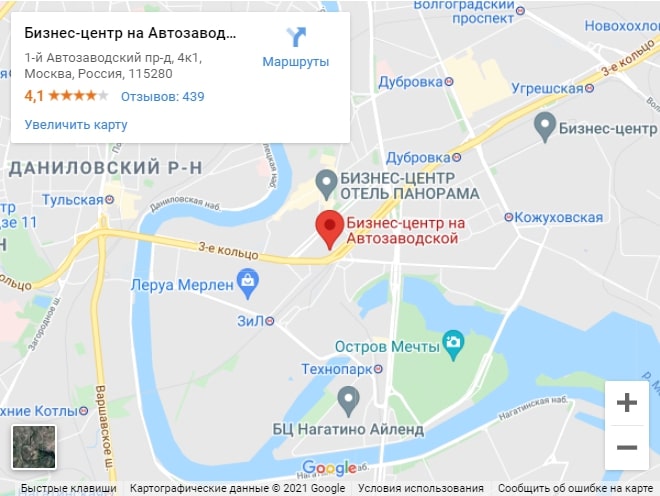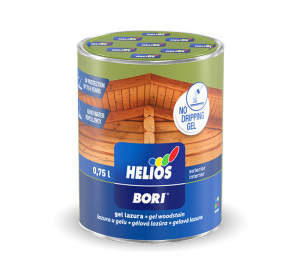Differences between Index ETFs and Index CFDs
Contents
You can easily create high-converting marketing materials if you get the CFD vs. ETF issue clear from day one. When creating primary site content, landing pages, and social media creatives, always present simple explanations. Fees, minimum deposit requirements, withdrawal, account opening, research tools and more.
CFD trading involves leverage, which is a tool that provides traders with the chance to open larger positions despite their initial account balance. Leverage is a useful tool that can maximise the chance of profit, but it also involves a great amount of risk in losing funds. While frequently you may buy, or go long, in an exchange traded fund, they can also be used for short positions.
How to start CFD trading
Open an ETF trading account with FXOpen and gain access to a wide range of markets and sectors via CFDs. Being baskets of assets, ETFs offer greater diversification. Plus, predicting the price movements of bundles of similar assets than tracking individual assets and projecting their performance. Trading ETFs is a great way to get exposure to shorter-term price movements within certain sectors. When you trade ETFs with CFDs, you can use leverage to get amplified exposure to the ETF of your choice.

This means you can diversify your portfolio without the need for a large amount of capital. It has never been easier to access the global markets from one trading account. ETF trading strategies like dollar-cost averaging, swing trading, asset allocation, sector rotation, betting on seasonal trends, short selling and hedging offer a wide range of features, making them ideal for beginners. ETFs, in their similarity to traditional stocks, have trading periods that tend to be in the same range as share trading whereas CFDs have short-term trade which dominates the market. Both CFDs and ETFs are commonly traded financial instruments and while they are both commonly cited, there are vital differences between them.
How to trade ETF CFDs
ETF is an investment fund that charts the market performance of a specific asset, industry sector and stock market index. When you use the Invest account, you can buy and sell equities without applying leverage to your available funds. Additionally, you will be able to trade with fractional shares of companies if your capital is lower than the value of a whole share from your desired company. ETFs enable you to gain exposure to an entire index from a single position.
Can you really make money on eToro?
Trading on eToro can be very profitable. But whenever you're dealing with the markets, you can lose money too (“your capital is at risk”)!
The popularity of these products led the American Stock Exchange to try to develop something that would satisfy regulations by the U.S. Thematic ETFs typically focus on long-term, societal trends, such as disruptive technologies, climate change, or shifting consumer behaviors. Some of the most popular themes include cloud computing, robotics, and electric vehicles, as well as the gig economy, e-commerce, and clean energy.
Develop your knowledge of financial markets
This means that a trader only needs to deposit a small fraction of the full trade value in order to open a position, giving you better exposure to the financial markets. While this can result in magnified profits if successful, this can equally result in significant losses. CFDs and ETFs are among the most traded products on the financial markets. This article explores several characteristics and differences concerning CFD vs ETF trading. CFDs and ETFs (exchange-traded funds) are both popular products for trading on the financial markets across the world. They share many similarities, ETFs and CFDs nevertheless present several operating differences, which should be understood before choosing one or the other of these financial products.
By 2005, it had a 44% market share of ETF assets under management. Inverse ETFs are constructed by using various derivatives for the purpose of profiting from a decline in the value of the underlying benchmark or index. It is a similar type of investment to holding several short positions or using a combination of advanced investment strategies to profit from falling prices. Many inverse ETFs use daily futures as their underlying benchmark. Some index ETFs invest 100% of their assets proportionately in the securities underlying an index, a manner of investing called replication.
Liquidity risk
There are also ETFs, such as Factor ETFs, that use enhanced indexing, which is an attempt to slightly beat the performance of an index using active management. Many markets are available to anyone with a simple internet connection. An ETF’s trading volume affects how easy it is to buy and sell. Experience over 1,200 advanced trading tools and an intuitive user interface that can be tailored to your trading style and strategies.
In Index ETFs, you have to pay the full price of the underlying asset, whereas in Index CFDs, you agree to receive or pay the difference in price between the opening and closing dates of the contract. If you are still wary of investing directly in an index, there are two ways to indirectly invest – Index ETFs and Index CFDs. Here’s a look at what each type of instrument offers and how they differ from each other. Choosing to trade CFDs on ETFs can be extremely attractive, no matter your level of experience in online trading, as they are characterised by a high daily liquidity and low fees. 2021 was a record year for ETFs with a massive$1.22 trillion in net inflows.
Despite the difference between these two financial instruments and the way that they are traded, both offer ample opportunity for profits and gains. The choice in which instrument to trade will depend solely on the trader and advanced technical analysis their objectives in trading either. This article has explored the common characteristics and differences between ETFs and CFDs. These types of traders use short-term strategies such as scalping, day trading and swing trading.
- A synthetic ETF has counterparty risk, because the counterparty is contractually obligated to match the return on the index.
- Over the years, EDHEC survey results have consistently indicated that ETFs were used as part of a truly passive investment approach, mainly for long-term buy-and-hold investment, rather than tactical allocation.
- View our platform video tutorials to get started with Next Generation.
- They can be bought and sold in the same way as any stock, but because they mirror the composition of some index or other sector they are a useful way to capitalize on larger macro trends in the market.
We use over 50,000 data points and a consistent, fact-based methodology. „The influence of ETFs on the price discovery of gold, silver and oil“. When new shares of an ETF are created due to increased demand, this is referred to as ETF inflows. When ETF shares are converted into the component securities, this is referred to as ETF outflows.
Traders: Which Markets Should You Trade?
Cryptoasset investing is unregulated in some EU countries and the UK. Placing an ETF trade is very similar to buying or selling a stock. Decide on the number of shares you wish to buy and what order type you want to execute – market, limit or stop. With an active trading account, the next step is to identify the ETFs you wish to trade. Factors to compare include expense ratios, trading volume, holdings, historical performance and current trading prices. This process is enhanced with TickTrader’s advanced trading tools.
AvaTrade is aware of the ETFs’ special nature and helps you stay on top of the market, to use the price changes to your favour. AvaTrade offers a range of popular ETFs to trade as CFDs, giving traders the ability to trade long or short with leverage of up to . Both are similar foreign currency exchange in that they both represent professionally managed baskets of individual stocks or bonds. An ETF, however, is traded directly on an exchange and can be jumped in and out of quickly. This is facilitated by many of the world’s financial markets that people know and trust.
The market share of ETFs has increased significantly in recent years. At the end of March 2019, ETFs account for 8.6% of total AUM in investment funds in Europe, up from 5.5% five years earlier. The trades with the greatest deviations tended to be made immediately after the market opened.
You have complete transparency with ETFs, and you don’t even need to take an active role in managing any of the components of the fund – it’s all done by the fund manager. The risks of loss from investing in CFDs can be substantial and the value of your investments may fluctuate. You should consider whether you understand how this product works, wh selfinvest review south africa and whether you can afford to take the high risk of losing your money. Both Index CFDs and ETFs offer exciting opportunities, although only if adequate risk management measures are put in place. You need to have good knowledge of the underlying assets of the index and understand your risk appetite before investing in these instruments.
A trader can potentially profit from an ETF that loses value and from one that rises in value. The first gold exchange-traded product was Central Fund of Canada, a closed-end fund founded in 1961. It amended its articles of incorporation in 1983 to provide investors with a product for ownership of gold and silver bullion. It has been listed on the Toronto Stock Exchange since 1966 and the American Stock Exchange since 1986.
- There is negligible inflation-related risk with ETF CFDs too, since these are short-term financial instruments.
- This is because there are many things that could happen between the time when a contract is signed to the time when it is due.
- Futures-based ETFs may also suffer from negative roll yields, as seen in the VIX futures market.
- If you convert high-quality traffic, you will earn high affiliate commissions – it is that simple.
- You can use currency ETF to trade the economic health of regions – such as the EU – or emerging market economies.
The details of the structure will vary by country, and even within one country there may be multiple possible structures. The shareholders indirectly own the assets of the fund, and they will typically get annual reports. Shareholders are entitled to a share of the profits, such as interest or dividends, and they would be entitled to any residual value if the fund undergoes liquidation. We can offer you a personalised training session to help you understand the trading platform, its features and give you more information about the products available to trade.
Are CFDs the same as ETFs?
ETFs involve buying something outright, but CFDs are a margined product, which means that you place a deposit of funds and hold a derivative position. As a result, it's usually more cost-effective to hold a long-term position in ETF form.
And thus, an ETF does not have to maintain a cash reserve for redemptions and saves on brokerage expenses. ETFs typically have extremely low marketing, distribution and accounting expenses, and most ETFs do not have 12b-1 fees. ETFs (exchange-traded funds) are baskets or collections of securities or stocks, which track the performance of an underlying index such as the S&P 500, for example. The ETF created around the Standard and Poor’s index is SPDR or SPY. An ETF’s price is determined by the value of the fund’s underlying assets, known as the net asset value , and not by the fund’s market price. NAV is calculated as the ETF asset value minus the ETF liability value, divided by the number of shares in circulation.


